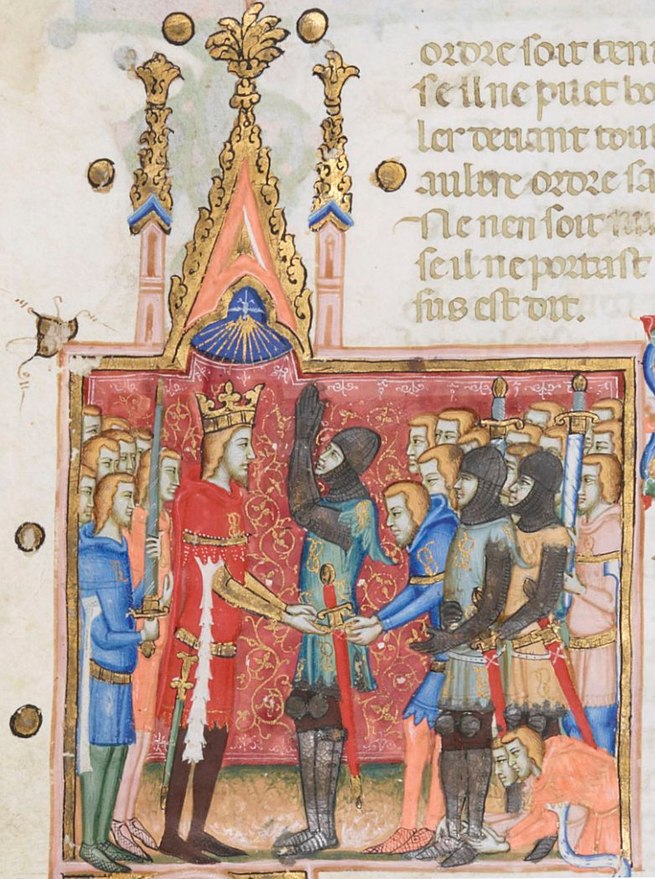
Main Difference
The main difference between Feudalism and Manorialism is that the Feudalism is a combination of legal and military customs and form of government in medieval Europe and Manorialism is a economic, political and judicial institution during the Middle Age in Europe, governed by a lord owning a land domain that he partly concesses to vassals
-
Feudalism
Feudalism was a combination of legal, economic, military and cultural customs that flourished in Medieval Europe between the 9th and 15th centuries. Broadly defined, it was a way of structuring society around relationships that were derived from the holding of land in exchange for service or labour.
Although it is derived from the Latin word feodum or feudum (fief), which was used during the Medieval period, the term feudalism and the system which it describes were not conceived of as a formal political system by the people who lived during the Middle Ages. The classic definition, by François-Louis Ganshof (1944), describes a set of reciprocal legal and military obligations which existed among the warrior nobility and revolved around the three key concepts of lords, vassals and fiefs.A broader definition of feudalism, as described by Marc Bloch (1939), includes not only the obligations of the warrior nobility but the obligations of all three estates of the realm: the nobility, the clergy, and the peasantry, all of whom were bound by a system of manorialism; this is sometimes referred to as a “feudal society”. Since the publication of Elizabeth A. R. Brown’s “The Tyranny of a Construct” (1974) and Susan Reynolds’s Fiefs and Vassals (1994), there has been ongoing inconclusive discussion among medieval historians as to whether feudalism is a useful construct for understanding medieval society.
-
Manorialism
Manorialism or seignorialism was an organizing principle of rural economies which vested legal and economic power in a lord of the manor. He was supported economically from his own direct landholding in a manor (sometimes called a fief), and from the obligatory contributions of a legally subject part of the peasant population under his jurisdiction and that of his manorial court. These obligations could be payable in several ways, in labor (the French term corvée is conventionally applied), in kind or in coin.
Manorialism originated in the Roman villa system of the Late Roman Empire, and was widely practiced in medieval western and parts of central Europe as well as China. An essential element of feudal society, manorialism was slowly replaced by the advent of a money-based market economy and new forms of agrarian contract.
In examining the origins of the monastic cloister, Walter Horn found that “as a manorial entity the Carolingian monastery … differed little from the fabric of a feudal estate, save that the corporate community of men for whose sustenance this organization was maintained consisted of monks who served God in chant and spent much of their time in reading and writing.”Manorialism died slowly and piecemeal, along with its most vivid feature in the landscape, the open field system. It outlasted serfdom as it outlasted feudalism: “primarily an economic organization, it could maintain a warrior, but it could equally well maintain a capitalist landlord. It could be self-sufficient, yield produce for the market, or it could yield a money rent.” The last feudal dues in France were abolished at the French Revolution. In parts of eastern Germany, the Rittergut manors of Junkers remained until World War II. In Quebec, the last feudal rents were paid in 1970 under the modified provisions of the Seigniorial Dues Abolition Act of 1935.
-
Feudalism (noun)
A social system based on personal ownership of resources and personal fealty between a suzerain (lord) and a vassal (subject). Defining characteristics are direct ownership of resources, personal loyalty, and a hierarchical social structure reinforced by religion.
-
Manorialism (noun)
A political, economic and social system in medieval and early modern Europe; originally a form of serfdom but later a looser system in which land was administered via the local manor.
